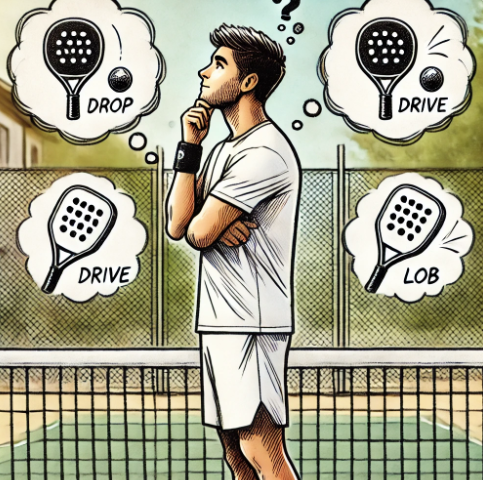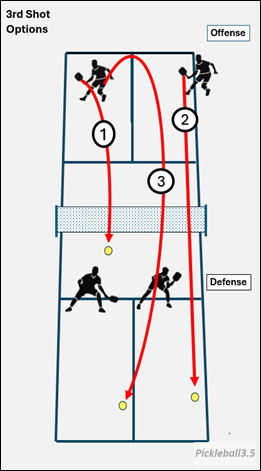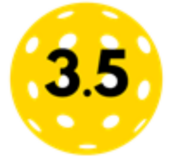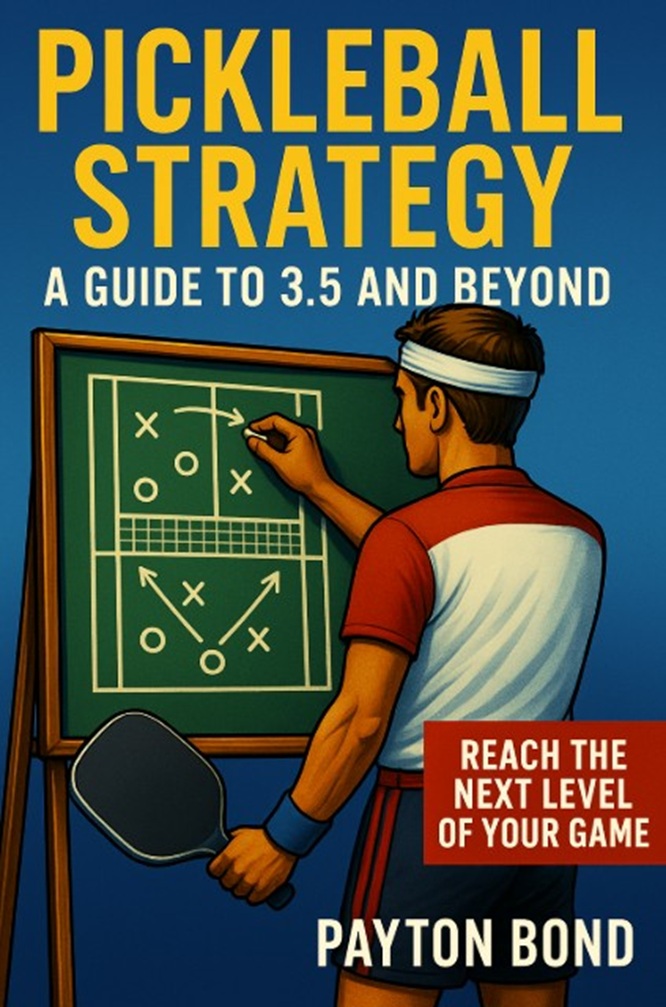
To reach the 3.5+ level in pickleball, you’ll need to master the art of the third shot. This pivotal play determines whether you can level the playing field against opponents already at the kitchen line. The three primary options for the third shot are:
- Drop Shot
- Drive
- Lob
- DRIP
These choices aren’t just about variety—they’re about knowing the right tool for the right situation and executing it with precision.

Why the Third Shot Matters
The third shot in pickleball is the first shot that isn’t constrained by placement rules. The Serve has to be hit a certain way and land in the service court. On the return of serve, only one player can play the shot after they let it bounce. The third shot starts the action. After the ball bounces, either player can play the shot. This shot dictates how the rest of the point will play out and it gives the offense an opportunity to attack and set the tone.
A well-executed third shot is your ticket out of the transition zone and into an advantageous position at the net. It’s your chance to even the odds against opponents who already dominate the kitchen. Without consistent control, sharp execution, and strategic decision-making, you’ll struggle to beat stronger players.
Most players evolve their third-shot game over time:
- They start with the drive, keeping it simple.
- Eventually, they experiment with lobs, adding a bit of flair.
- Finally, they learn the drop shot, the cornerstone of advanced play.
This progression is critical to advancing your skills—and your rating. Check out the next post on Third Shot Player Progression to learn more about how this evolves.
Third Shot Options
1 – Drop Shot
The drop shot is the surgeon’s scalpel of pickleball—precise, soft, and devastating when executed correctly. It’s a gentle shot that just clears the net and lands near your opponent in their kitchen zone.
Why It Works:
- Forces opponents to hit up, limiting their ability to attack.
- Neutralizes their net advantage, giving you time to advance.
- Often causes errors like pop-ups or net shots.
Pro Tip: A great drop shot is like a whispered secret—it’s quiet, subtle, and leaves your opponent scrambling to figure out their next move.
2 – Drive
The drive is a fast, flat shot that says, “Let’s see you handle this!” It’s a great option when you see an opening or want to pressure your opponent into a mistake.
Why It Works:
- Forces quick reactions and errors, especially if aimed at their body.
- Keeps your opponents on their toes and unable to settle at the net.
Pro Tip: Think of the drive as the fastball of pickleball—straight, powerful, and intimidating when placed well. Just don’t get carried away and send it sailing out of bounds.
3 – Lob
The lob shot is your surprise card, a high, arching stroke that forces your opponent to retreat from the net. It’s particularly effective against players who aren’t very mobile or lack good overhead skills.
Why It Works:
- Pushes your opponents back, giving you time to reposition.
- Forces them into awkward angles for an overhead smash.
Pro Tip: A good lob is like a Hail Mary in football—it’s risky but spectacular when it lands. Use it wisely, and don’t give your opponents too many opportunities to smash it back at you.
4. DRIP Shot
The DRIP shot is a new term for a hybrid shot combining the Drive and Drop shot. The DRIP is a slower-paced drive with heavy topspin. It is designed to land at the opponent’s feet before they reach the kitchen. The topspin causes the ball to jump up and at the opponent, often forcing a popup. It’s effective, but once opponents are already set at the kitchen line, the DRIP loses much of its bite.
Why It Works:
- Forces quick reactions and errors.
- Keeps your opponents on their toes and unable to settle at the net.
Pro Tip: This is an advanced shot. Focus on the standard drive and drop shot first. Once you have mastered these fundamentals, experiment with the DRIP shot.
Progress Through Practice
The third shot is a skill that grows with time and experience. Most players naturally start with the drive, dabble in lobs, and eventually embrace the drop shot. Mastering all three options is essential to advancing your game, especially as you move into higher skill levels where variety and consistency are non-negotiable.
Check out Payton Bonds new eBook!
Pickleball Strategy – A Guide to 3.5 and Beyond
See it on Amazon.

👤 Follow Payton Bond
All Star and Top Contributor on multiple Facebook Pickleball Forums.
Contributor at TheKitchenPickle.com.
Visit Payton Bonds Facebook Page
Keep Learning:
- Read the posts on basic shot execution to see how the Drop Shot, Drive Shot and Lob shot are executed.
- Read the next post on Third Shot Player Progression to explore how shot selection evolves as you improve.

